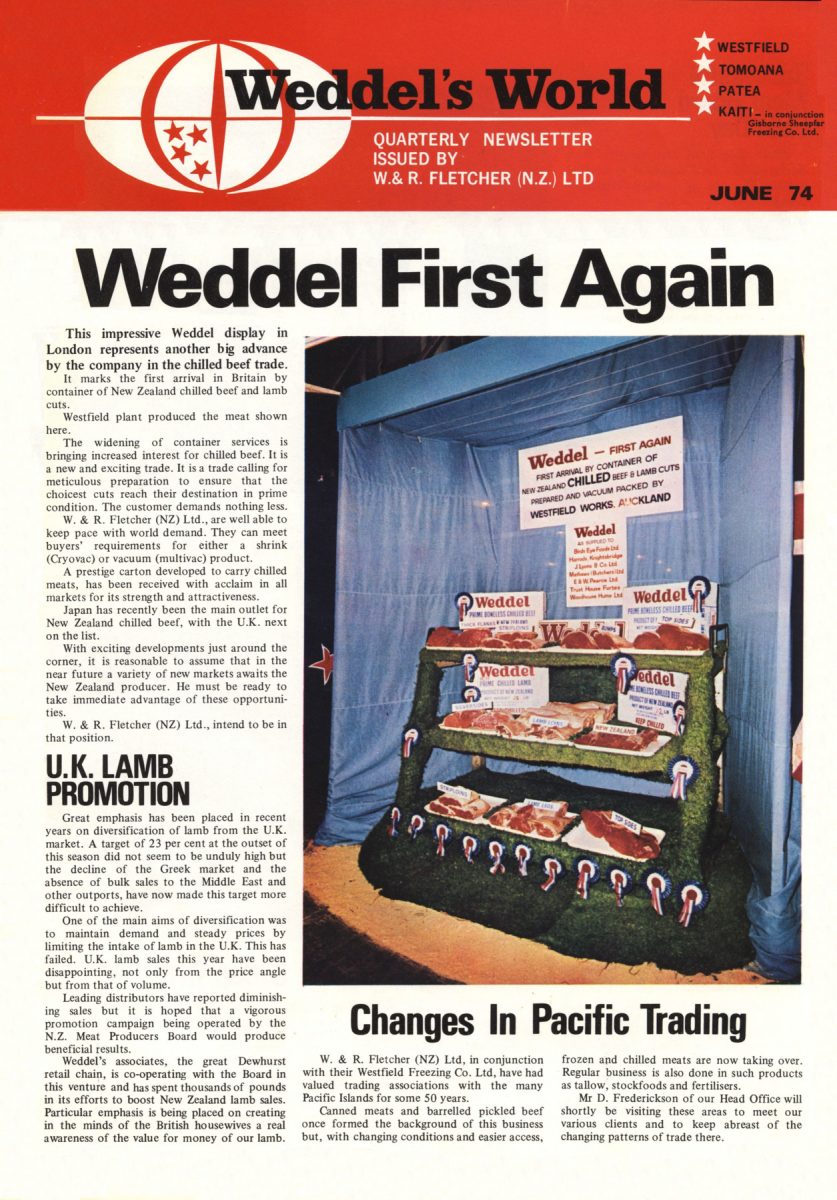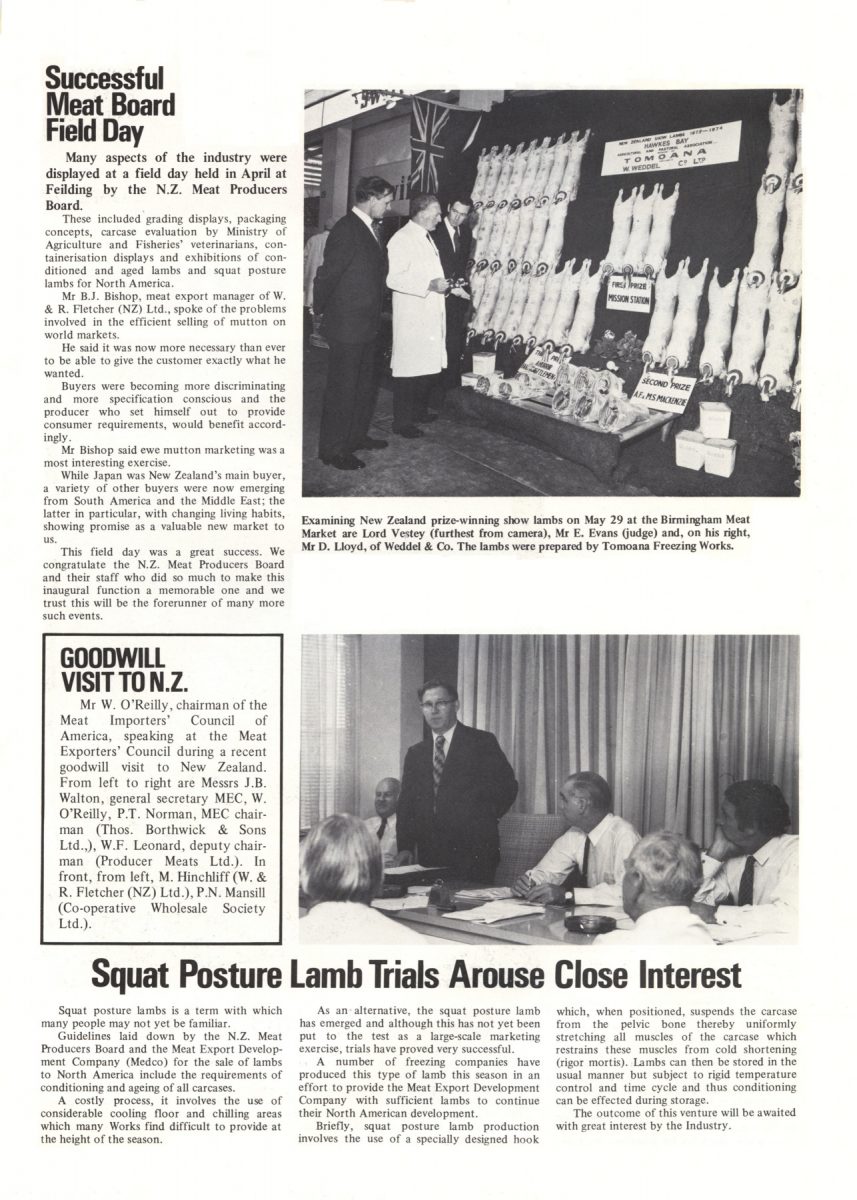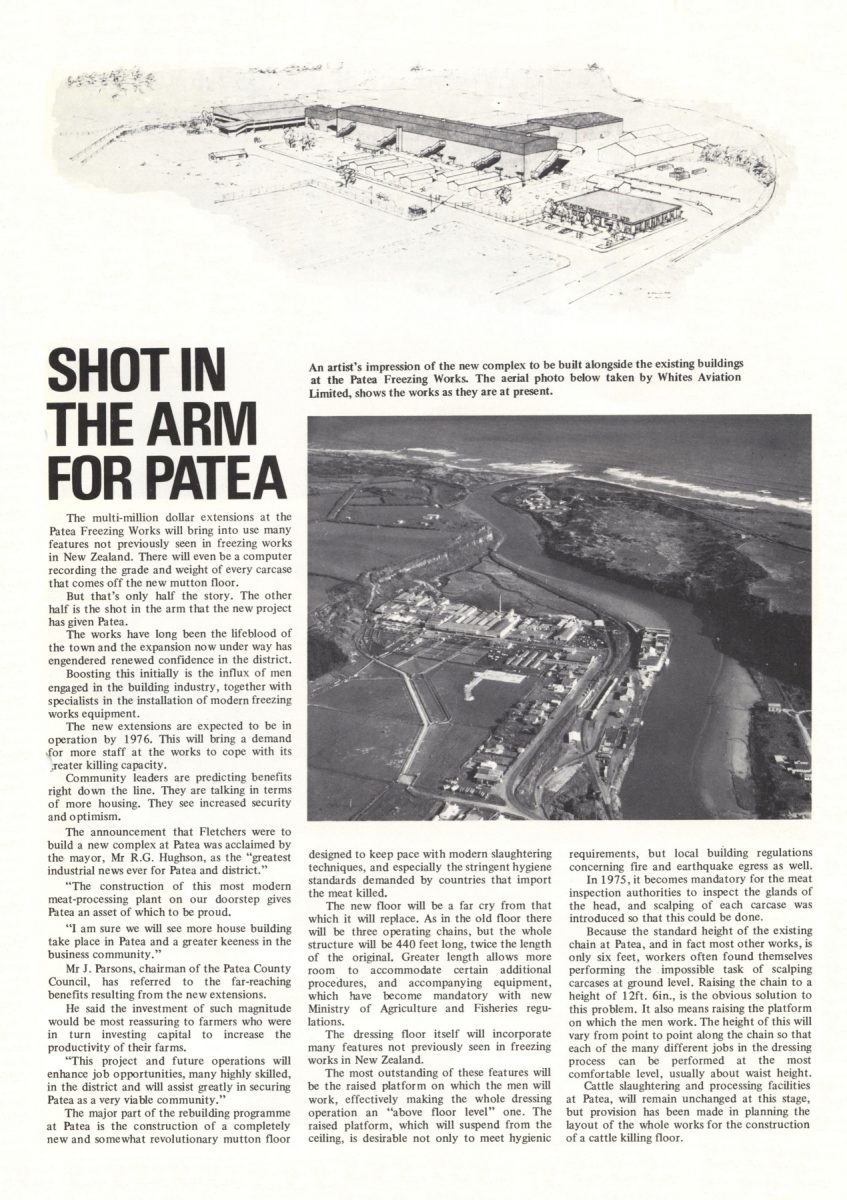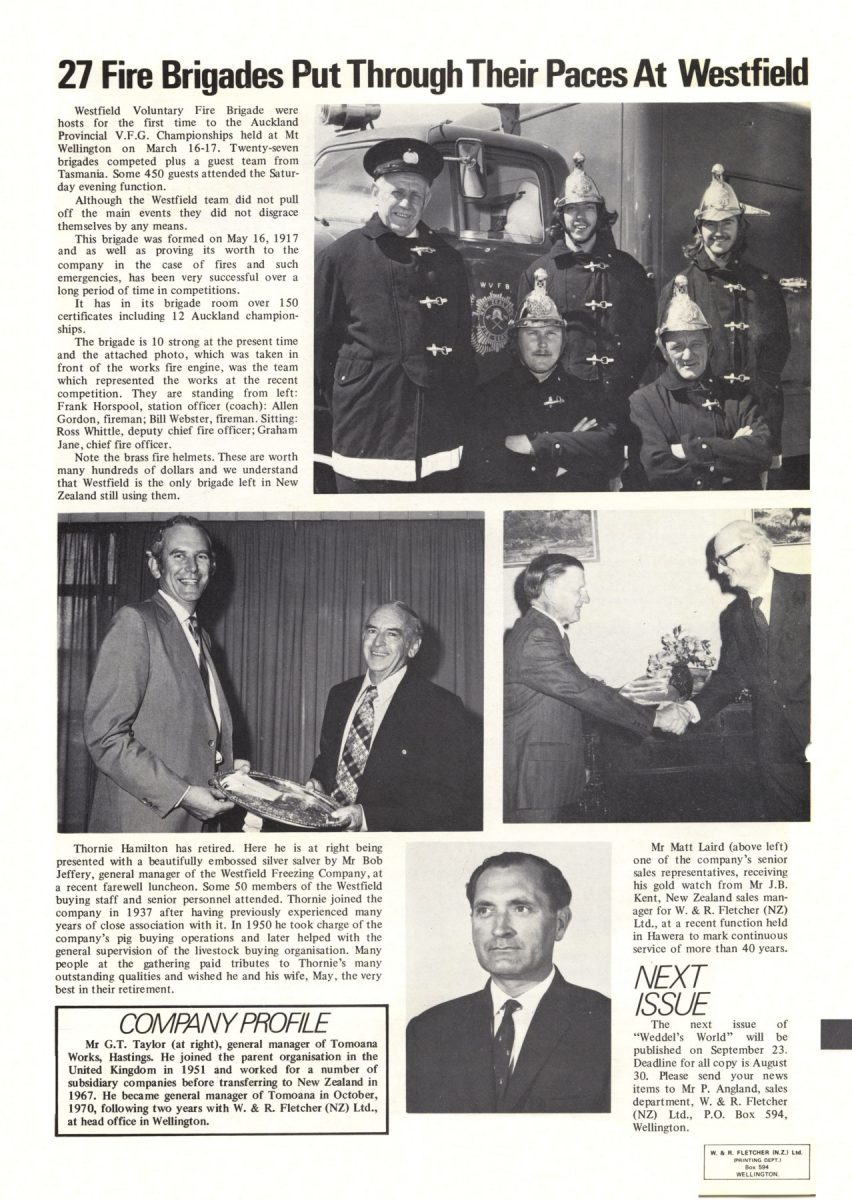An artist’s impression of the new complex to be built alongside the existing buildings at the Patea Freezing Works. The aerial photo below taken by Whites Aviation Limited, shows the works as they are at present.
SHOT IN THE ARM FOR PATEA
The multi-million dollar extensions at the Patea Freezing Works will bring into use many features not previously seen in freezing works in New Zealand. There will even be a computer recording the grade and weight of every carcase that comes off the new mutton floor.
But that’s only half the story. The other half is the shot in the arm that the new project has given Patea.
The works have long been the lifeblood of the town and the expansion now under way has engendered renewed confidence in the district.
Boosting this initially is the influx of men engaged in the building industry, together with specialists in the installation of modern freezing works equipment.
The new extensions are expected to be in operation by 1976. This will bring a demand for more staff at the works to cope with its greater killing capacity.
Community leaders are predicting benefits right down the line. They are talking in terms of more housing. They see increased security and optimism.
The announcement that Fletchers were to build a new complex at Patea was acclaimed by the mayor, Mr R.G. Hughson, as the “greatest industrial news ever for Patea and district.”
“The construction of this most modern meat-processing plant on our doorstep gives Patea an asset of which to be proud.
“I am sure we will see more house building take place in Patea and a greater keeness [keenness] in the business community.”
Mr J. Parsons, chairman of the Patea County Council, has referred to the far-reaching benefits resulting from the new extensions.
He said the investment of such magnitude would be most reassuring to farmers who were in turn investing capital to increase the productivity of their farms.
“This project and future operations will enhance job opportunities, many highly skilled, in the district and will assist greatly in securing Patea as a very viable community.”
The major part of the rebuilding programme at Patea is the construction of a completely new and somewhat revolutionary mutton floor designed to keep pace with modern slaughtering techniques, and especially the stringent hygiene standards demanded by countries that import the meat killed.
The new floor will be a far cry from that which it will replace. As in the old floor there will be three operating chains, but the whole structure will be 440 feet long, twice the length of the original. Greater length allows more room to accommodate certain additional procedures, and accompanying equipment, which have become mandatory with new Ministry of Agriculture and Fisheries regulations.
The dressing floor itself will incorporate many features not previously seen in freezing works in New Zealand.
The most outstanding of these features will be the raised platform on which the men will work, effectively making the whole dressing operation an “above floor level” one. The raised platform, which will suspend from the ceiling, is desirable not only to meet hygienic requirements, but local building regulations concerning fire and earthquake egress as well.
In 1975, it becomes mandatory for the meat inspection authorities to inspect the glands of the head, and scalping of each carcase was introduced so that this could be done.
Because the standard height of the existing chain at Patea, and in fact most other works, is only six feet, workers often found themselves performing the impossible task of scalping carcases at ground level. Raising the chain to a height of 12ft. 6in., is the obvious solution to this problem. It also means raising the platform on which the men work. The height of this will vary from point to point along the chain so that each of the many different jobs in the dressing process can be performed at the most comfortable level, usually about waist height.
Cattle slaughtering and processing facilities at Patea, will remain unchanged at this stage, but provision has been made in planning the layout of the whole works for the construction of a cattle killing floor.















Do you know something about this record?
Please note we cannot verify the accuracy of any information posted by the community.